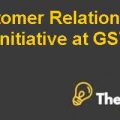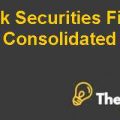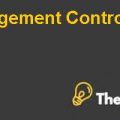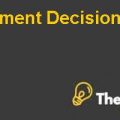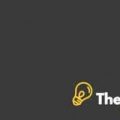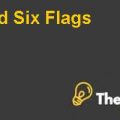
The calculations of this have been given in the Excel file.
(a) As the volatility of the XYZ’s stock is greater than market’s stock, the XYZ’s stock should have a highest cost of equity than 10% calculated through CAPM in the excel file which is about 14%.
(b) When the volatility between the market stock and the XYZ’s stock is equal than the Cost of equity will be exactly equals to 10% i.e. (3% + 1(10%-3%))
Problem 4
This is the simple question in which we have calculated the market capitalization by multiplying the no. of shares with market price and then divided the market capitalization of each stock to arrive at their weigh tage. All calculations are shown in the excel file.
Problem 10
All calculations have been shown in the excel file:
(a) Calculated using average formula.
(b) Excess return is the return earn by an investor over risk free rate. The beta is calculated by using a formula (Covariance between XYZ and Market divided by variance of the market). Covariance reflects the degree to which the return of two securities varies or changes together (F.Modigliani, 1973). The beta measures the risk or deviation of the stock return from the market return.
Beta = 1 (no deviation)
Beta >1 (more risky than the market)
Beta <1 (less risky than the market
(c) The alpha is the excess actual return earned by investor over an expected return.
(d) The cost of equity using CAPM is equals to 6%
(e) The cost of equity calculated in part (d) is more appropriate to use a base for estimate because shows the return required by the investor after the incorporating the risk associated with that return.
Problem 14
(a) The highest expected return of the bond in this is equals to 2.05% in the event when the market interest rate equals to zero percent. At that time, the market price of this bond will be highest and the bond holder can earn a maximum return by selling these bonds in the market
(b) If the yield to maturity equals to 1.5% for the similar maturity bond the market price will goes upward but not up to the level discussed in part (a) above.
(c) Calculation for this part has been shown in the excel file in which the expected return has been taken from the part (a), which is 2.05% and as per the event thatis given in this question is 2%.
Chapter 13
Problem 14
(a) If the market is semi strong form, then it will predict that Davita’s will not beable to produce more than 2% alpha i.e. 100 million so, the investor will receive the same and after that 0%. However, the investor can generate more than 2% if the market is weak form efficient (IMMANEE, 2011).
(b) The money Davita have under its management is $5000 million
(I.e. $100 million/2%)
(c)The money generated from the management’s fee income is $50 million
(I.e. $5000 million* 1%)
Problem 9
(a) The overconfidence bias is a tendency where one believes that he has a full control over the expectations of the future however,the overconfidence leads to surprises which can damage the overall position of the investors. Since the investors have very limited strategy they either follow others or play a game of gambling in the hope of arriving at the break even (YEE, 2005).
Problems Solution Case Solution
(b) In this question Joe’s brother is overconfident towards the predictions of stock prices and he certain that takeover will happen however,the probability of this event happening is 50%. The current stock price is before the takeover is $15 per share and Joe’s brother has informed its broker to purchase the stock at any price below $20 which is the takeover price. Therefore, as per this question the return earned by the Joe’s brother is negative (($20 * 50%) – purchase price which will somewhere between $15 and $20).
(c) If takeover does not takes place, then the price of the stock will range from$10 to $15.Joe’s brother still has a negative return because he has booked a price of stock between $15 and 20$ while the actual price is below $15.
(d) The brother’s expected profit is positive due to overconfidence bias................
This is just a sample partial case solution. Please place the order on the website to order your own originally done case solution.

